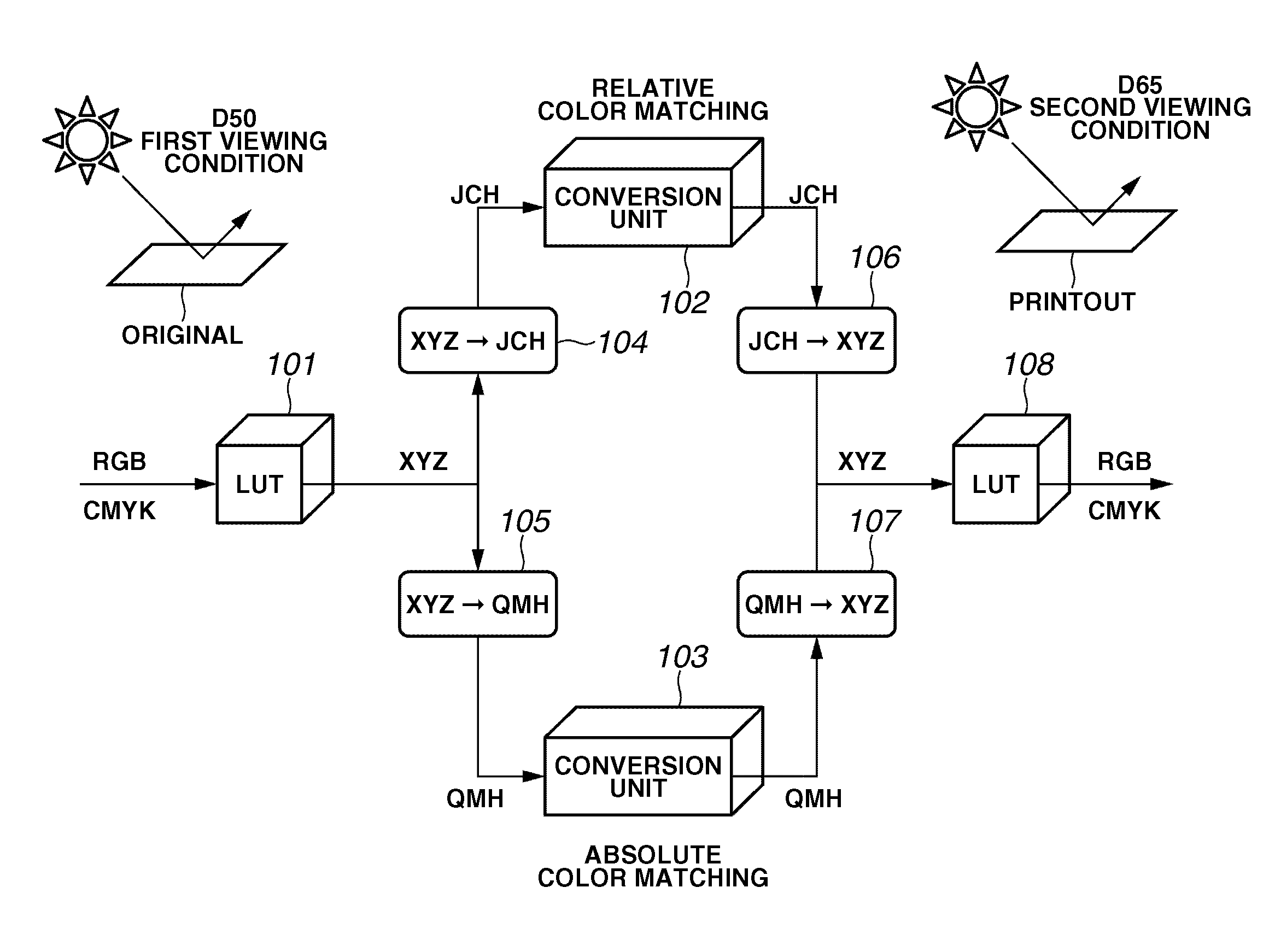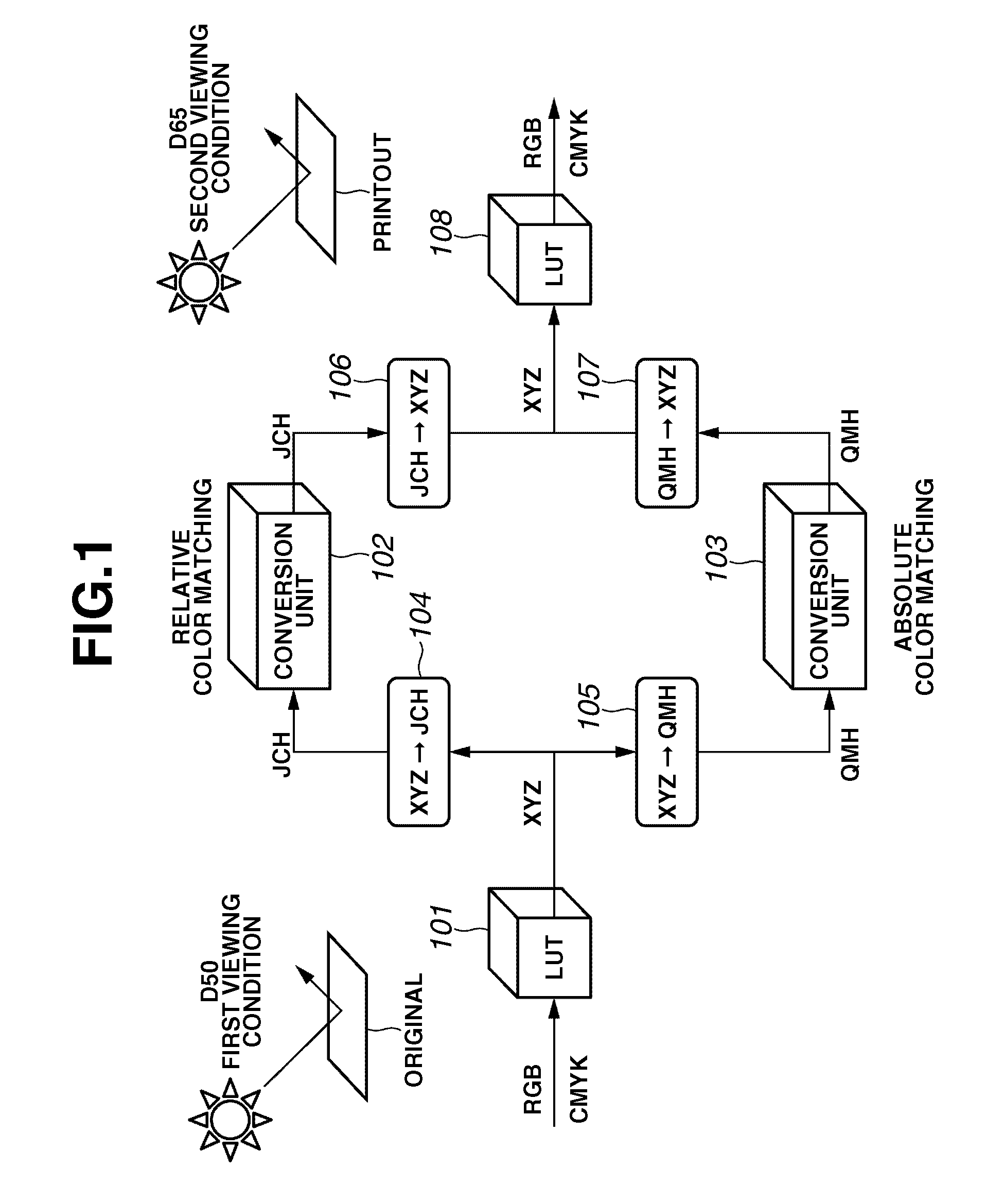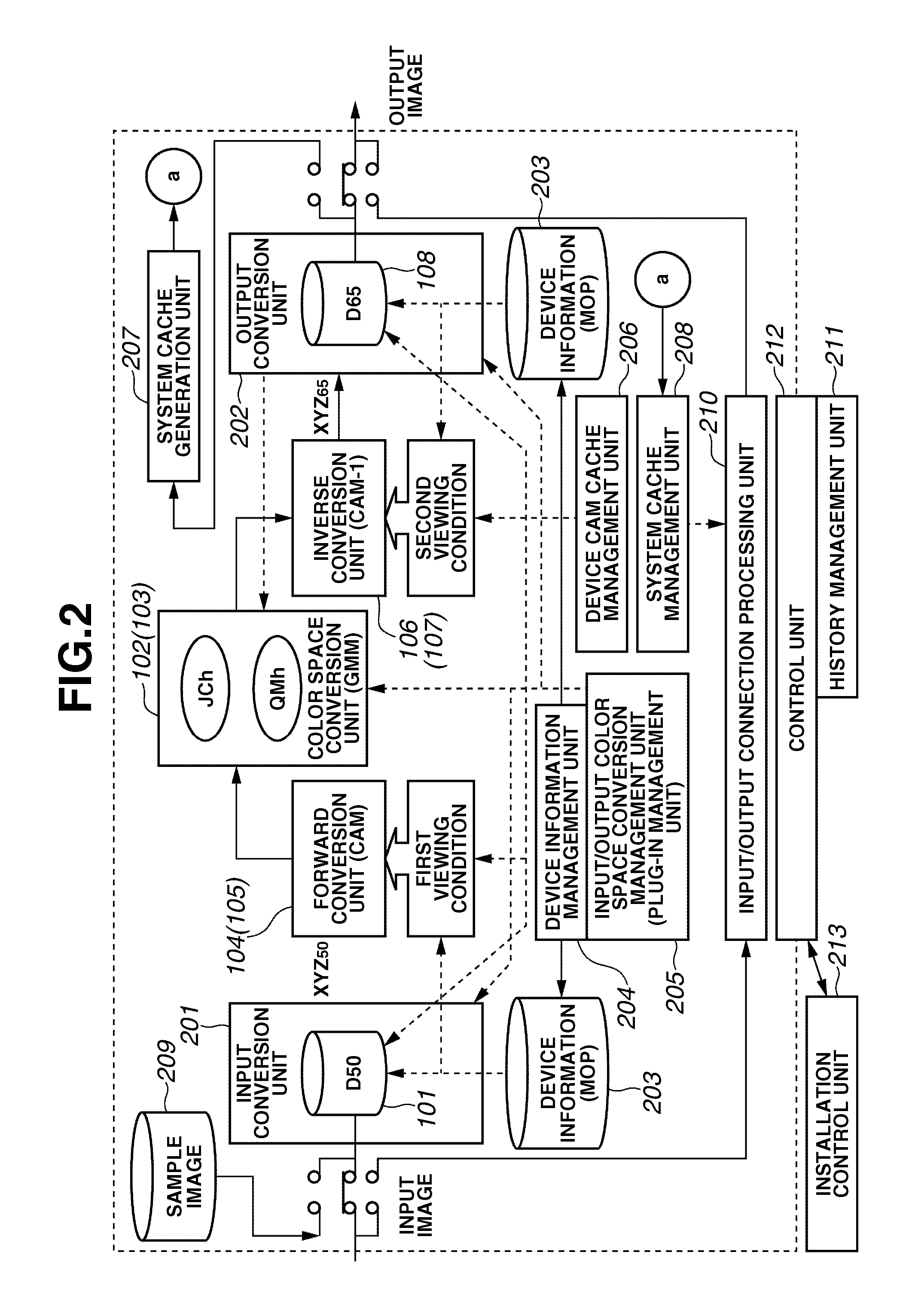Color conversion apparatus and method
a color conversion and apparatus technology, applied in the field of color conversion using a table, can solve the problems of inability to ensure correct color reproduction, adversely affect tonability, and the probability of discontinuity on the boundary surface to become problematic, so as to enhance color reproducibility, maintain tonability, and improve accuracy
- Summary
- Abstract
- Description
- Claims
- Application Information
AI Technical Summary
Benefits of technology
Problems solved by technology
Method used
Image
Examples
Embodiment Construction
[0045]Exemplary embodiments of the invention will now be described in detail below with reference to the accompanying drawings.
[0046]Color Matching Process Using Color Appearance Model
[0047]FIG. 1 is a conceptual diagram illustrating a color matching process using a color appearance model. As shown in FIG. 1, a conversion matrix or a conversion lookup table (LUT) 101 is used to convert an input-device-dependent color signal into device-independent color space data based on a white point reference for input-side ambient light. Color appearance model forward conversion units 104 and 105 convert an XYZ signal, which is output from the conversion LUT 101, into human color appearance color signals JCH and QMH according to input viewing conditions (a white point corresponding to a D50 illuminant, an illuminance level, and a state of ambient light), respectively. Color appearance model inverse conversion units 106 and 107 convert human color appearance color signals JCH and QMH into XYZ si...
PUM
 Login to View More
Login to View More Abstract
Description
Claims
Application Information
 Login to View More
Login to View More - R&D
- Intellectual Property
- Life Sciences
- Materials
- Tech Scout
- Unparalleled Data Quality
- Higher Quality Content
- 60% Fewer Hallucinations
Browse by: Latest US Patents, China's latest patents, Technical Efficacy Thesaurus, Application Domain, Technology Topic, Popular Technical Reports.
© 2025 PatSnap. All rights reserved.Legal|Privacy policy|Modern Slavery Act Transparency Statement|Sitemap|About US| Contact US: help@patsnap.com



